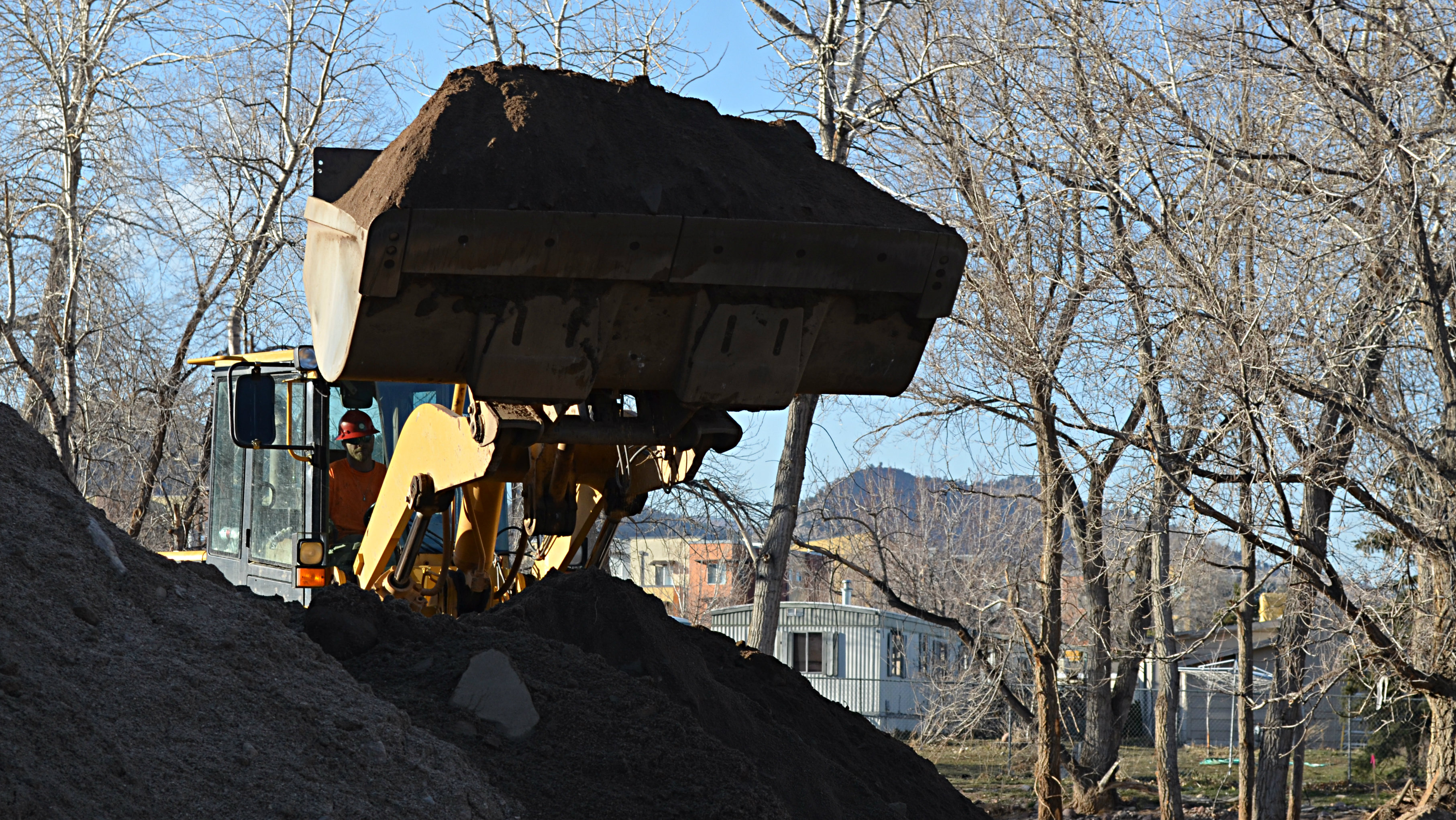
On the north end of the city of Boulder, Darcy Cline stands in front of her house and looks across the street where work is underway to return the Fourmile Canyon Creek to its pre-flood depth.
Thousands of tons of sediment and debris left behind from last September's flooding are being removed so the creek doesn't clog when the mountain snowpack begins melting and washes through the waterway.
"I hope it solves the problem," Cline says. "I hope it’s a solution to having a flood again or the rain or whatever."
Communities across the Front Range are scrambling to clear waterways to avoid a repeat of last September's massive flooding.
When the heavy rain began, Fourmile Canyon Creek overflowed, pushing so much mud against the doors of Cline's home that she and her husband couldn't open them. As a result they were trapped inside for two days until a neighbor finally waded over and shoveled them out.
"It was like we were sitting in middle of the river and it was just roaring around us," Cline says.
Cline wishes a dike or some type of protection was being added between the creek and her home. But city officials say the best they can do before runoff begins is return waterways to their pre-flood state.
Fourmile Canyon and Boulder Creeks are their top priorities.
Overload
Ann Noble is coordinating the work for Boulder and says the crush of work is so overwhelming it's keeping her up at night.
"I think about sediment and debris,” Noble says. “And I think about getting this work done. There’s a lot - a lot to do."
Noble is confident the priority projects will be finished by May 1 but hopes that deadline is soon enough since the runoff could begin a few weeks earlier.
But even if the county wanted to hire more contractors to speed up the work, the extent of the flood damage makes that nearly impossible. Repairs are so widespread that companies have all the work they can handle.
Noble says Boulder recently put a project out to bid and couldn't get a single contractor to bite. She's now trying to add that project onto an existing contract the city had already awards.
Outside the city in Boulder County, officials also are repairing damaged waterways. Officials have also spotted 200 potential problem areas with about half of that list considered to be high risk for new flooding.
The concern for new flooding is heightened by the depth of this winter's snowpack which measures about 50 percent above average in northern Colorado.
Channel 7 meteorologist Mike Nelson will be closely tracking how much more snow falls in the region and how it melts.
"If we get a rapid warming trend coming up in the spring, the northern portions of the state are going to be the biggest concern for snowmelt flooding," Nelson says. "But it all really depends on what we see for snow in March and April and how fast things warm up when we get into May and June."
Jamestown
In September during the flooding, the Big and Little James Creeks flowed over their banks, causing major damage in the Boulder County mountain community of Jamestown.
Mayor Tara Sheddinger says work will begin soon to try to keep the creeks contained this year.
"What they’ll be doing is putting in protective measures to protect infrastructure that wasn’t damage during the flood so we don’t have further damage in town," Sheddinger says.
Workers in Jamestown have already removed debris from the creeks, including several homes. That’s not the case in Larimer County, where about 30 buildings are still teetering on the edge of collapse along the Big Thompson Canyon.
Larimer County’s Suzanne Bassinger is concerned heavy runoff could wash those buildings downstream.
"So those need to be taken care of or at least a plan needs to be made that they’re taken care of," Bassinger says. She adds property owners need to protect the buildings or remove them, or the county might step in and act before runoff.
Across northeast Colorado, emergency management officials are asking residents who have a waterway on their property to prepare for runoff.
They also urge everyone in the area that flooded in September to buy flood insurance now since it takes 30 days to go into effect.








